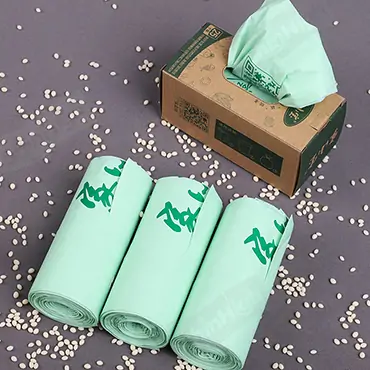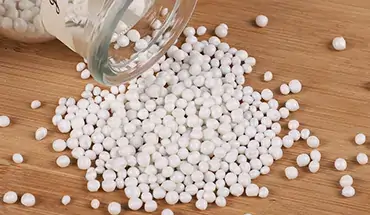Have you ever wondered what to do with those pesky potato peels and banana skins? Ever think about all those food scraps you toss in the trash? Well, get ready to have your mind blown, because there’s a way to turn that everyday “waste” into something amazing: home compost! That’s right, you can transform your kitchen scraps into nutrient-rich gold for your garden, all while being a superhero for the planet. It is super easy! And guess what? Home compostable bags can make the whole process even easier.
What Exactly is “Home Composting”?
Let’s start with the basics. What exactly is home composting, and why should you even care?
Breaking it Down: Compost is Nature’s Recycling System
Imagine nature’s own recycling system. Leaves fall, plants decompose, and all that organic matter breaks down into rich, dark, earthy goodness. That’s composting in a nutshell. Home composting is basically mimicking that process right in your backyard or even your kitchen. It’s like having a mini recycling plant right at your fingertips! You’re taking organic materials like food scraps, yard waste, and even certain types of paper and helping them decompose into a nutrient-rich soil amendment called compost.
Why Bother with Home Composting?
Sure, home composting is fantastic for the environment. You’re diverting waste from landfills, reducing greenhouse gas emissions, and creating something valuable from something that would otherwise be considered trash. But the benefits go way beyond that:
- Supercharge Your Garden: Compost is like a superfood for your plants. It improves soil structure, adds essential nutrients, and helps your garden thrive. Think bigger blooms, tastier veggies, and healthier plants all around!
- Save Money: Why buy expensive fertilizers when you can make your own amazing soil booster for free? Home composting can save you some serious cash on garden supplies.
- Feel Good Factor: Seriously, there’s something incredibly satisfying about turning your kitchen scraps into something so beneficial. It’s like a little bit of everyday magic!

Getting Started: Your Home Composting Toolkit
Alright, ready to get your hands dirty (not literally, thanks to compostable bags!)? Here’s what you’ll need to embark on your home composting adventure:
The Star of the Show: Choosing Your Compost Bin or Pile
First of all, you need a place to do your composting. You’ve got a few options:
- Compost Bin: These come in all shapes and sizes, from simple plastic bins to fancy tumbling models. They’re great for keeping things contained and tidy.
- Compost Pile: If you’ve got the space, you can simply create a pile in your backyard. It’s the most basic method, but it works!
- Worm Composting (Vermicomposting): This involves using worms to break down your scraps. It’s super-efficient and can even be done indoors!
The Supporting Cast: Gathering Your Compostable Materials
Now for the fun part: collecting your “ingredients”! Here’s where home compostable bags come in super handy. You can use them to collect your food scraps in the kitchen, making the whole process cleaner and more convenient. Just toss your scraps in the bag, and when it’s full, the whole thing goes straight into the compost bin. No mess, no fuss!
Browns vs. Greens: The Secret to Compost Harmony
Think of your compost like a recipe. You need a balance of “brown” and “green” materials:
- Browns: These are your carbon-rich materials, like dried leaves, shredded paper (newspaper, cardboard), straw, and wood chips. They provide structure and aeration to your compost.
- Greens: These are your nitrogen-rich materials, like fresh grass clippings, fruit and vegetable scraps, coffee grounds, and tea bags. They provide the “fuel” for the microorganisms that break everything down.
A good rule of thumb is to aim for a ratio of about 2-3 parts browns to 1 part greens. But don’t stress too much about being exact. Just try to keep a good mix.
Home Composting: A Step-by-Step Guide
Okay, let’s get down to the nitty-gritty. Here’s how to actually do this home composting thing:
Step 1: Layering Your Compost Like a Lasagna
Whether you’re using a bin or a pile, the key is layering. Start with a layer of browns, then add a layer of greens. If you’re using home compostable bags filled with food scraps, just toss them in as your “green” layer. Keep alternating layers until your bin is full or your pile is a good size.
Step 2: The Moisture Factor: Not Too Wet, Not Too Dry
Your compost should be about as moist as a wrung-out sponge. If it’s too dry, the decomposition process will slow down. If it’s too wet, it can become smelly and anaerobic (lacking oxygen). To add moisture, simply sprinkle some water on your layers as you build your pile or fill your bin.
Step 3: Give it Some Air: Why Oxygen is Crucial
Those microorganisms that break down your compost need oxygen to thrive. That’s why aeration is important. If you’re using a bin, make sure it has some holes for airflow. If you’re using a pile, you’ll need to turn it periodically with a garden fork or pitchfork to introduce oxygen.
Turning and Monitoring: Keep an Eye on the Prize
Speaking of turning, this is an important part of the process, especially for pile composting. Turning helps to mix the materials, aerate the pile, and speed up decomposition. How often you need to turn depends on your method and how quickly things are breaking down. Just keep an eye on your compost and turn it when it seems like it needs it.
Troubleshooting Your Compost: What to Do When Things Get Funky
Sometimes, things don’t go exactly as planned. Here are a few common home composting problems and how to fix them:
Too Smelly?
A healthy compost pile shouldn’t have a strong, unpleasant odor. If yours does, it’s probably too wet or lacks oxygen. Add some browns, turn the pile, and make sure there’s good airflow.
Too Dry?
If your compost is dry and crumbly, it’s not breaking down properly. Add some water and mix it in.
Not Breaking Down?
If your compost seems stuck, make sure you have a good balance of browns and greens. You might also need to turn it more frequently or add a “compost activator” (which you can find at garden stores). These usually contain extra microorganisms and nitrogen to jumpstart the process.
The Superpower of Home Compostable Bags
Remember those home compostable bags we talked about? Here’s why they’re a game-changer for home composting:
Making Collection Easy and Mess-Free
No more slimy food scraps sitting on your kitchen counter! Home compostable bags make it super easy to collect your food waste without any mess or odors.
Ensuring a Smooth Breakdown in Your Compost
These bags are designed to break down completely in a composting environment, along with your food scraps. They become part of the compost, adding to the richness of the final product. They’re like the ultimate team players in your home composting system. They are typically made from plant-based materials like cornstarch or potato starch.
Compostable Bags: A Win-Win for Businesses and Home Composters
For distributors and suppliers, offering home compostable bags is a smart move. It is a great opportunity. The demand for sustainable products is booming, and these bags are a perfect fit for the growing number of people embracing home composting. They’re a practical, eco-friendly solution that customers will love. They are a practical, eco-friendly solution that customers will love. Plus, they can help your business stand out as a leader in the sustainability movement.
Ready to Dive into Home Composting?
Home composting is an incredibly rewarding experience. It’s a simple yet powerful way to make a positive impact on the environment, improve your garden, and even save some money. And with home compostable bags, it’s easier and more convenient than ever before. So why not give it a try? You might be surprised at how much you enjoy turning your kitchen scraps into garden gold.





